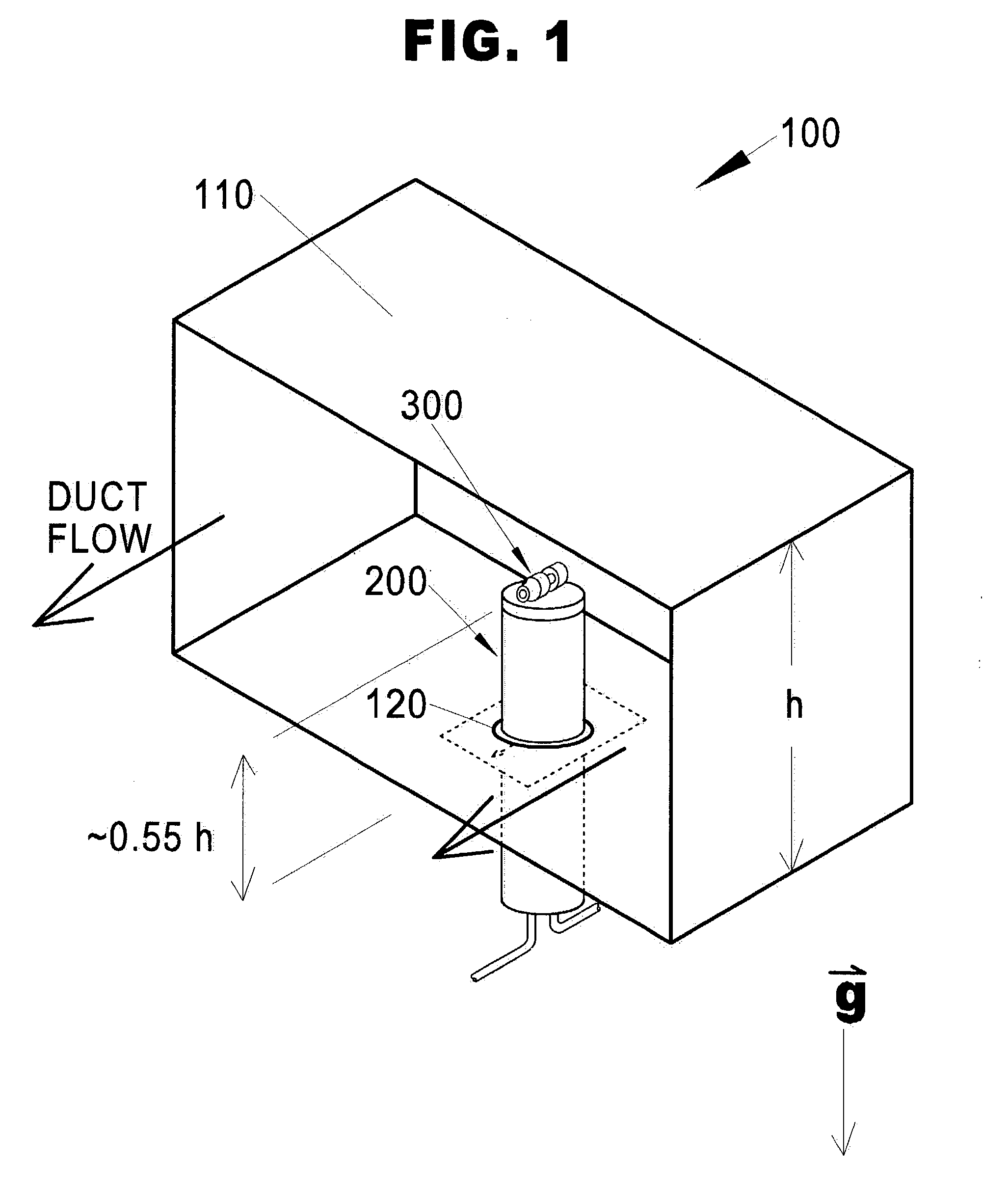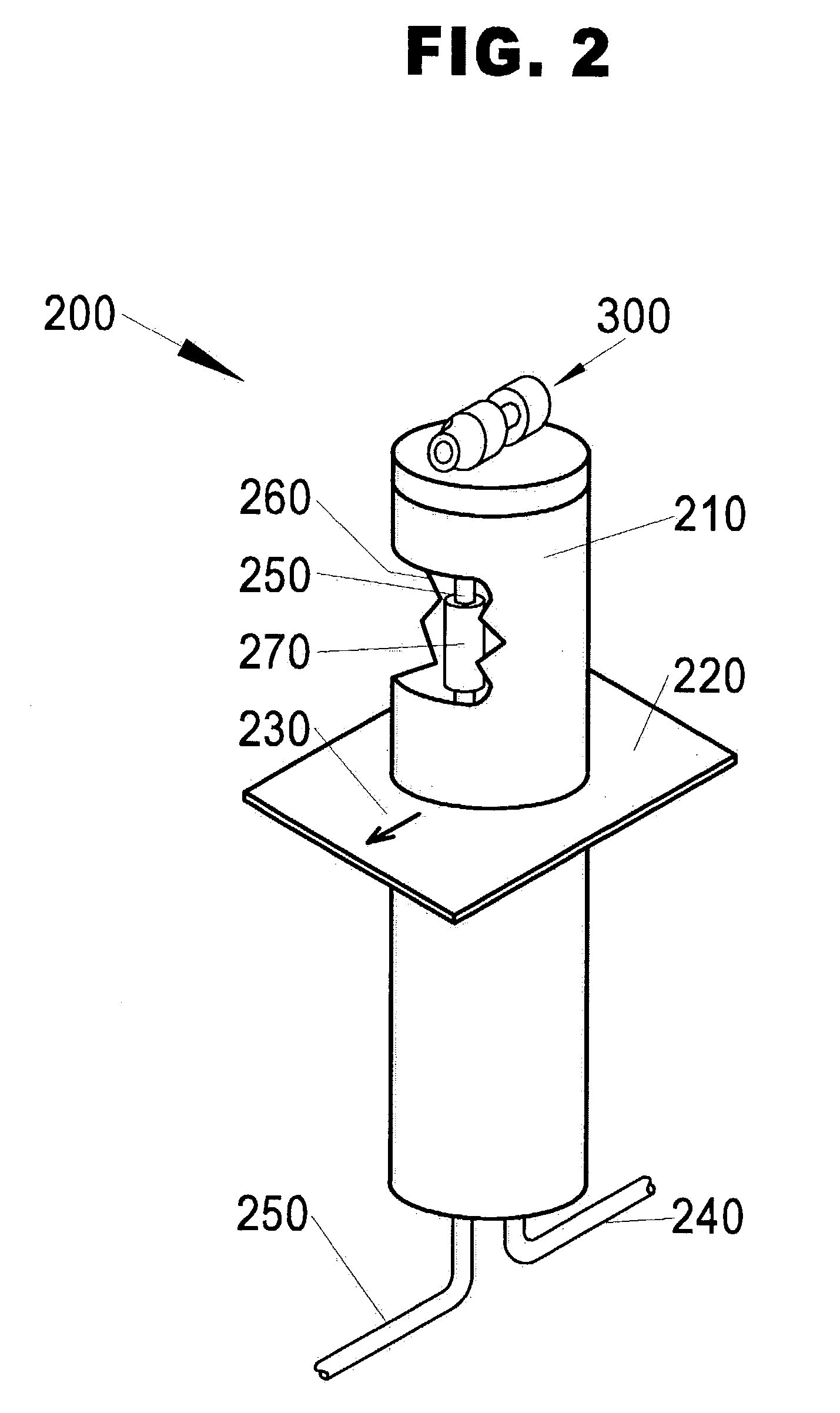Method and apparatus for duct sealing using a clog-resistant insertable injector
a technology of insertable injectors and duct sealing, which is applied in the direction of lighting and heating apparatus, combustion types, heating types, etc., can solve the problems of reducing the availability of downstream sealant particles, frequent clogging, and narrow ducts limiting the application of duct sealing applications
- Summary
- Abstract
- Description
- Claims
- Application Information
AI Technical Summary
Benefits of technology
Problems solved by technology
Method used
Image
Examples
Embodiment Construction
[0064]In general, the present compact aerosol sealant injector provides nebulization or atomization of a pressurized liquid supply at a location near the nozzle tip. When the liquid supply is ejected in close proximity to the propellant, turbulent mixing occurs, forming a fine liquid mist, or liquid spray. The turbulent mixing phenomenon is extremely complex, depending on variables such as: relative flow velocities, densities, viscosities, surface tensions, and temperature distributions, etc., in both flows. Further representative references regarding the physics and fluid dynamics of atomizers and sprayers, incorporated herein by reference, are: Atomization and Sprays, by Arthur H. Lefebvre, Hemisphere Publishing Company, 1978; and Liquid Atomization, by L. Bayvel and Z. Orzewchowski, Taylor & Francis, 1993. This phenomenon becomes yet more complex when a heated propellant gas is used to desolvate or dry particles in the liquid supply.
[0065]Heating the propellant gas has many advan...
PUM
| Property | Measurement | Unit |
|---|---|---|
| cone angle | aaaaa | aaaaa |
| cone angle | aaaaa | aaaaa |
| cone angle | aaaaa | aaaaa |
Abstract
Description
Claims
Application Information
 Login to View More
Login to View More - R&D
- Intellectual Property
- Life Sciences
- Materials
- Tech Scout
- Unparalleled Data Quality
- Higher Quality Content
- 60% Fewer Hallucinations
Browse by: Latest US Patents, China's latest patents, Technical Efficacy Thesaurus, Application Domain, Technology Topic, Popular Technical Reports.
© 2025 PatSnap. All rights reserved.Legal|Privacy policy|Modern Slavery Act Transparency Statement|Sitemap|About US| Contact US: help@patsnap.com



